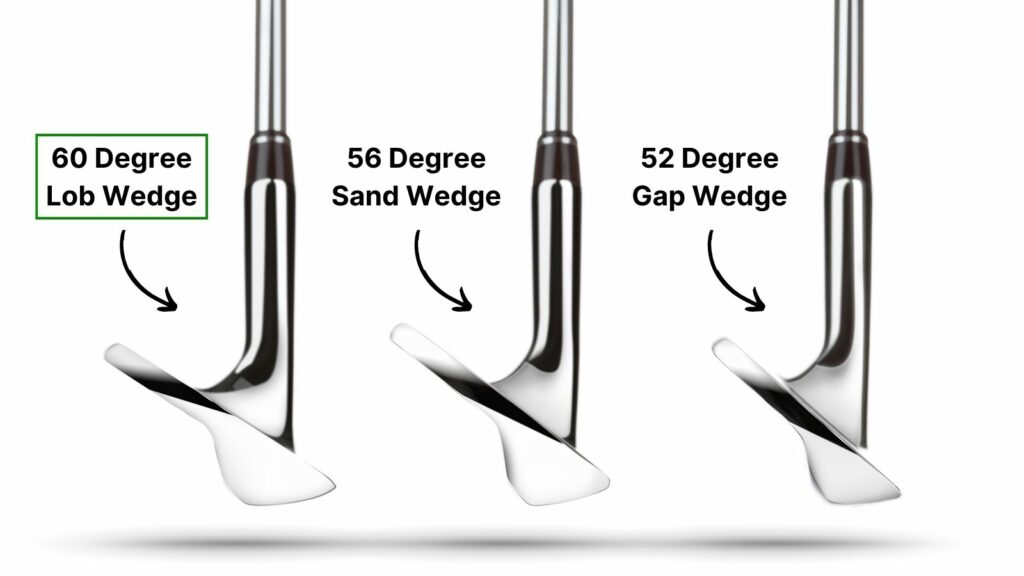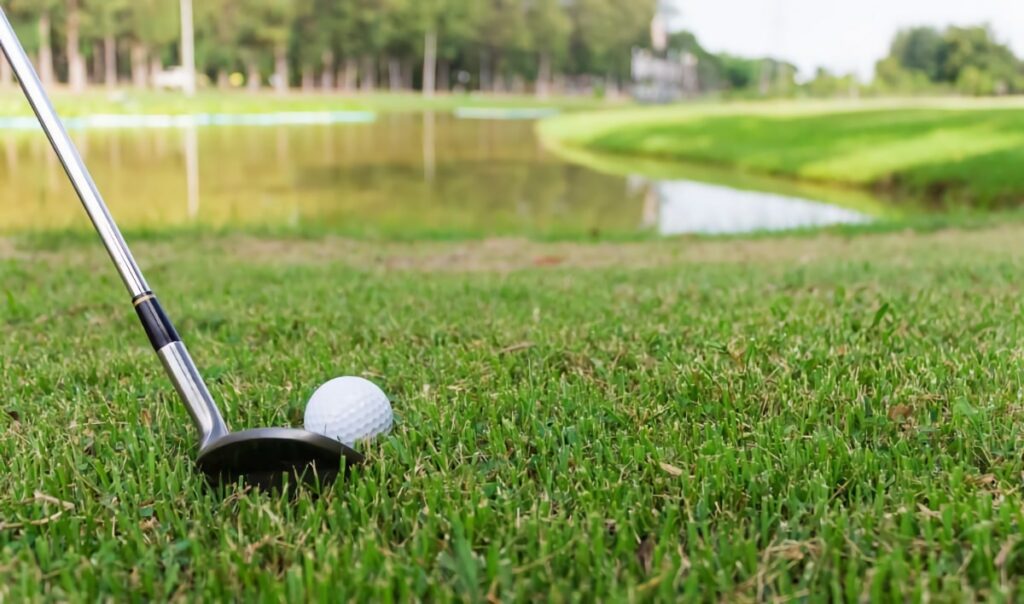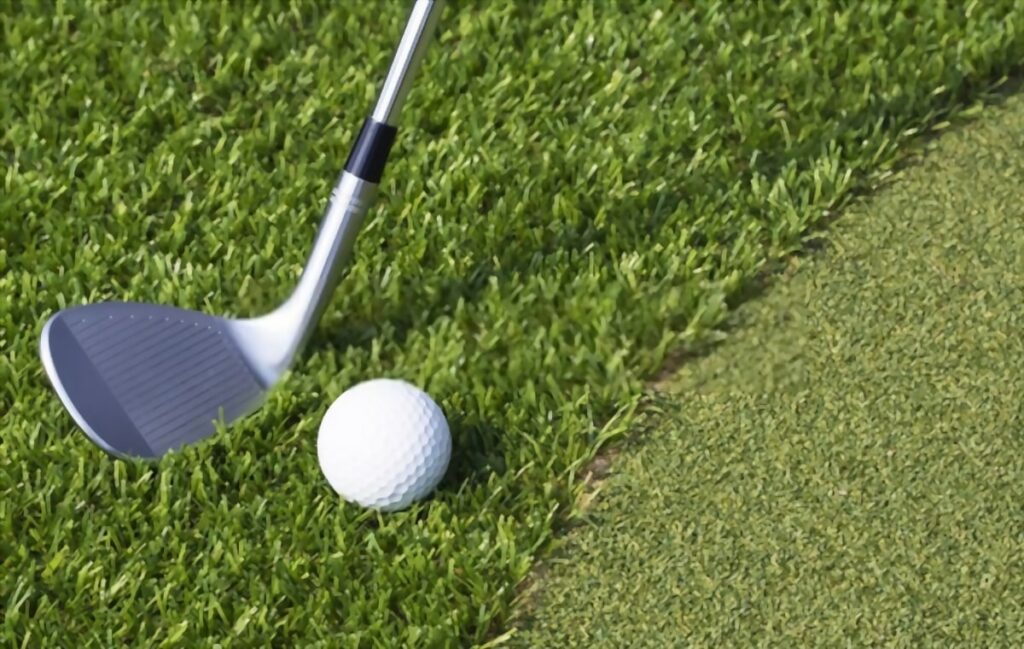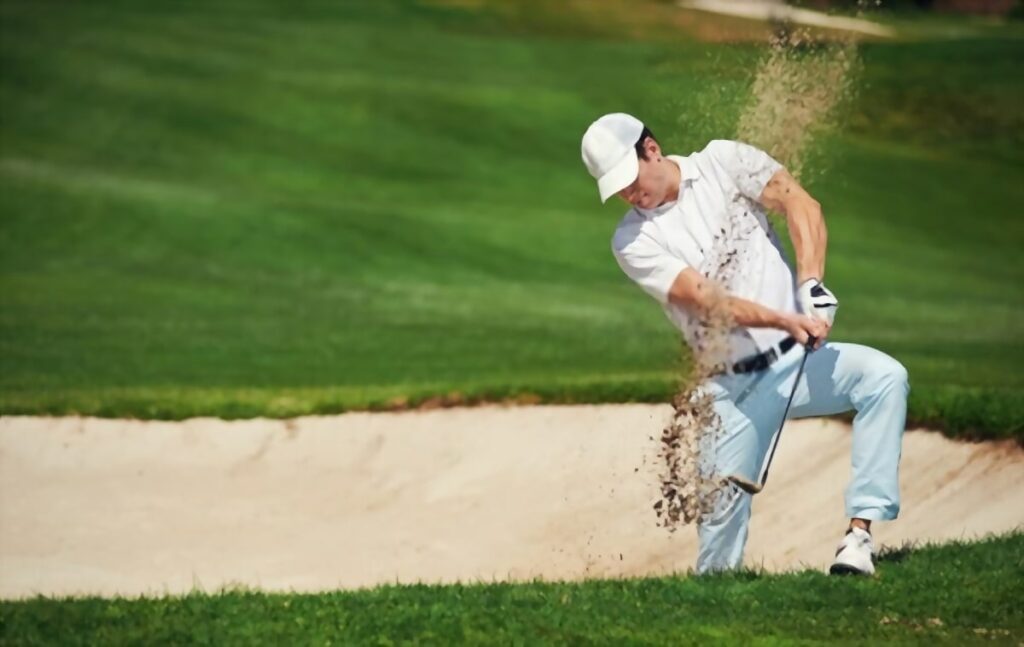For many golfers, the 60 degree wedge can be a difficult club to master.
But, while takes practice to strike it consistently well, it can be vital for shots where it’s essential to stop the ball as quickly as possible — with minimal roll.
So, what is a 60 degree wedge used for?
In this article, you’ll learn when to use a 60 degree wedge — from pitch and chip shots to high-lipped bunkers where loft is imperative.
What Is a 60 Degree Wedge Used For?
Generally, 60 degree wedges are used for getting the ball up in the air quickly, landing softly with minimal roll. They can be used for full and half-swing pitch shots under 100 yards, as well as for delicate chip shots around the green. They’re also particularly useful for bunker shots.
What is a 60 Degree Wedge?
A 60 degree wedge is often known as a lob wedge. In fact, any wedge within a range of approximately 58-62 degrees is classified as a lob wedge.
As the highest lofted club in the bag, a 60 degree wedge is designed to get the ball into the air quickly and stop on the ground with minimal roll.
While every professional golfer carries a lob wedge, it can be a hit-or-miss club for amateur golfers. Read on to find tips on how to use a 60 degree wedge.

When to Use a 60 Degree Wedge
With plenty of loft, 60 degree wedges are perfect for when you need to get the ball aerial as quickly as possible and return to the ground with minimal roll.
So, when exactly should you use a 60 degree wedge? Generally, for:
- Pitch shots into the green
- Chip shots around the green
- Bunker shots
Let’s take a look at each scenario.
1. Pitch Shots Into the Green

Lob wedges are ideal for full-swing pitch shots — particularly when you need the ball to stop on the putting surface as quickly as possible.
On average, a full-swing 60 degree wedge will travel around 80 yards. However, you can take distance off the club for shorter pitch shots by performing half-swings.
For instance, a 50-yard shot is ideal for a lob wedge. Provided that you can make a good strike, the ball will fly toward the green at a high trajectory.
Ultimately, this will help the ball stop close to where it pitches, with minimal roll.
By contrast, the ball flight would be much lower with a 54 degree wedge. This often results in more roll-out, making it difficult to control and resulting in longer putts.
2. Chip Shots Around the Green

Also, 60 degree wedges can also be handy for chip shots around the green.
With enough practice, you can use the extra loft of a lob wedge to chip the ball as close to the hole as possible. This can either come in the form of a delicate chip shot from the fringe, or a “flop shot” when a higher trajectory is needed.
Alternatively, you can opt for a lower-lofted club like an 8-iron or a chipper, and” bump and run” the ball on the green — as described here by Rory McIlroy.
Often, this is a better option for golfers who lack confidence with delicate chips using high-lofted wedges. The margin for error with a 60 degree wedge is pretty low.
However, when there’s trouble between your ball and the green — like a greenside bunker or water — the extra loft of a 60 degree wedge is needed. It will come out at a higher trajectory to help stop the ball fairly quickly on the putting surface.
3. Bunker Shots

Finally, 60 degree wedges are very useful for hitting out of the sand.
A “sand wedge” typically has 54-58º of loft. However, 60 degree lob wedges are handy when dealing with short-sided greenside bunkers, as well as high-lipped bunkers.
Greenside Bunkers
Quite often, we find ourselves in greenside bunkers with very little green to aim for.
With a typical sand wedge, the ball will likely come out at a low trajectory with too much roll to stop it close to the pin. In this case, a 60 degree wedge can be very effective.
Essentially, you want to hit the sand a few inches in front of the ball. Then, the naturally high loft angle will help “splash” the ball out at a higher trajectory than usual.
Ideally, this will allow the ball to land softly on the green with minimal roll, giving us a good chance of stopping it closer to the pin for a shorter putt.
PRO TIP: Make sure the wedge’s bounce matches your conditions. In soft sand, you want more bounce to prevent digging. In firm sand, a lower bounce would be preferred.
High-Lipped Bunkers
Occasionally, you might find your ball nestled at the foot of a bunker with a tall lip.
In this scenario, a 60 degree wedge offers plenty of loft to get the ball out and back onto the fairway — without the risk of hitting the edge of the lip.
Check out the video below by Golf Sidekick, which demonstrates what a 60 degree wedge is used for around the golf course:
FAQs
Here are some common questions regarding 60 degree wedges:
How Far Do You Hit a 60 Degree Wedge?
Typically, a full-swing 60 degree wedge shot will travel around 80 yards. However, this depends on several factors, including swing speed, angle of attack, and the age and “freshness“ of the grooves on the clubface.
Nevertheless, many golfers get more use out of their lob wedge with delicate chips and bunker shots around the green, rather than for full-swing pitch shots.
PRO TIP: To prolong your wedges and regain some lost spin, you can sharpen the grooves on the clubface.
Should a High Handicapper Use a 60 Degree Wedge?
60 degree wedges take a good amount of skill to hit consistently well. Therefore, it’s not always the best option for a high handicapper. Instead, a less-lofted 56 degree is likely to be more versatile, and easier to strike on a repeatable basis.
With a lob wedge, the margin for error is pretty low. As you swing into the ball, the leading edge is very exposed, which can risk fat or thinned shots.
However, with a less-lofted wedge — like a 56 degree — there is slightly more clubface to work with at the point of impact. For shorter shots, you can simply swing with less power than you would with longer pitch or chip shots.
Ultimately, lob wedges can be very useful for cases where you need to get the ball over an obstacle between your ball and the target. So, it’s worth practicing!

Conclusion
In summary, a 60 degree wedge is used in the following scenarios:
- Pitch shots from within 80 yards
- Chip shots from around the green
- Bunker shots (greenside, or high-lip)
Generally, high-lofted lob wedges are ideal for getting the ball aerial as quickly as possible, and returning to the ground with minimal roll.
But, it takes practice to consistently hit good shots with a lob wedge. While it can be very rewarding, it’s perhaps not as versatile as a 54 or 56 degree.
Give it a try! If you struggle with consistency, consider dropping to a lower loft.


